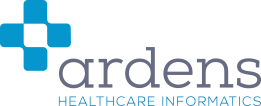The Ardens formularies are all based upon national prescribing guidelines.
When prescribing from a formulary, an acute medication will always be prescribed. This ensures that the patient is not started and left on a repeat without the appropriate initial checks. If you wish to start a repeat straight away, prescribe the acute and then in the view at the bottom of the formulary, right click > make repeat.
With Ardens Pro certain formularies can be localised so that they support local guidelines. The ICB and/or GP Practice need to inform Ardens of any changes. These updates will then be reviewed by our Clinical Pharmacist and Clinical Team who all follow a Clinical Governance process. Users can submit change requests in whatever format is easiest for them which can be either via a change request form, by email or by spread sheet.
Three different methods of localisation are used depending on the formulary and extent of change requested, different methods of localisation are appropriate:
- Formularies with link to "Local Preferred Choices" template
- Formularies with localised disabled options
- Formularies with individualised templates
To see a list of the formularies on Ardens and how they can be localised see here.
Formularies With Link To "Local Preferred Choices" Template
These formularies are based on national guidance and only include products that are listed here. If any of the national guidance advises products that are unlicensed, for specialist initiation only or have a cost warning, the clinician will have to tick a box to acknowledge this in-order to override this warning and prescribe the product. If however there is a preferred local formulary option, a link on the formulary template gives the clinician quick access to the local "Local Preferred Choice" template.
This mechanism avoids unnecessary duplication, clinical governance and SystmOne performance issues.
This is often used for formularies where there are a wide range of different products which may be used for several different indications. An example of this would be the creams and ointments formulary, where depending on the indication the guidance is often different. Eg the older person skin care pathway in Harrogate and Rural District uses a different selection of products to the Incontinence associated dermatitis pathway.

Formularies With Localised Disabled Options
With this method of localisation, local non-formulary items will be disabled and prescribers will not be able to issue the medication unless the "Override Local formulary" tick box is selected. This method is used on formularies where prescribers may wish to prescribe off formulary for specific patients, for example COPD. Examples of when the prescribers may wish to use a non-formulary inhaler would be for patients with manual dexterity problems, low inspiratory flow or other issues which can affect inhaler usage. This method not only supports the use of local guidelines and formularies but also supports prescribers to provide the best care to their patient following best practice.
As guidelines are updated and new products come to market, the formularies will be reviewed and new products will be added. It remains the responsibility of the local authority to advise us of which products should be disabled on the formulary.
Formularies that are localised like this include: Asthma, COPD and Diabetes.

Formularies With Individualised Templates
This method is used when there are large differences between local formularies on the guidance given. A good example of this would be End of Life formularies. Different areas use a variety of different doses and regimes. With this method of localisation, a protocol runs in the background when launching the formulary to display the correct version of the formulary for your practice. If no local version of the formulary exists a national formulary will be displayed.

